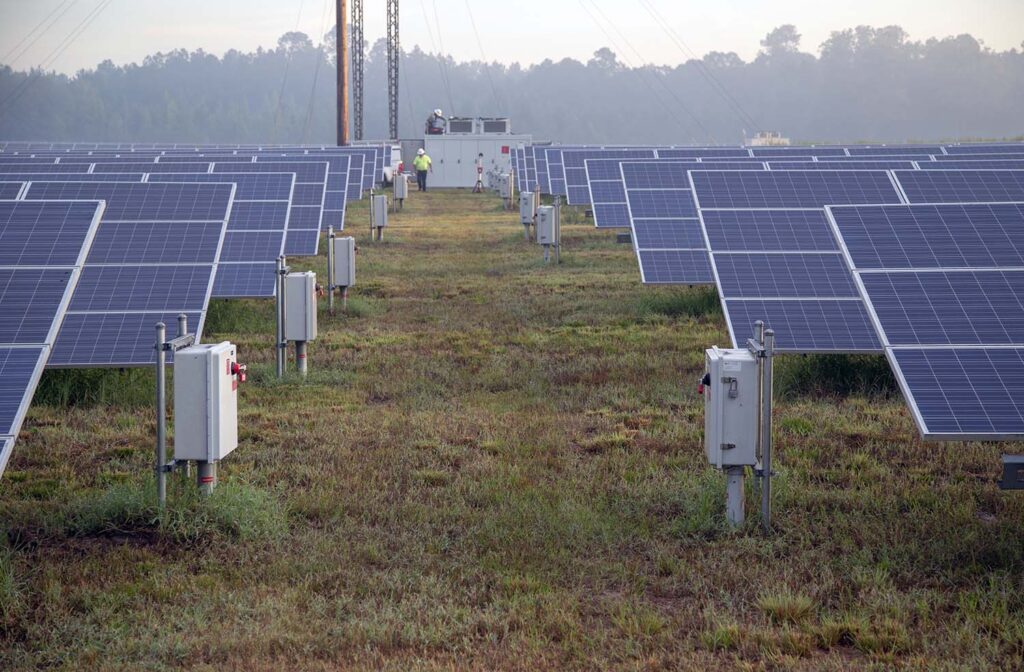
Six electric cooperatives were among the 19 energy project developers picked to potentially receive almost $80 million in combined grant funding as part of an April 30 announcement from the Department of Energy.
The awards, which are still subject to negotiation, stem from the $1 billion Energy Improvements in Rural or Remote Areas (ERA) program managed by the DOE’s Office of Clean Energy Demonstrations. The program, created through the bipartisan infrastructure law of 2021, seeks to address energy challenges in areas with fewer than 10,000 people by providing funds for clean energy projects and infrastructure improvements.
Altogether, co-ops were selected for $28.5 million of the funding announced April 30.
The ERA awards are “another great example of our members taking advantage of federal funding for much-needed investments in their grids and for other innovative technologies,” said Lauren Khair, NRECA senior director of energy research and resilience.
The two biggest awards for co-ops involved clean energy and grid improvement projects.
Camp Point, Illinois-based Adams Electric Cooperative was selected to receive $5 million to help install a 1-megawatt wind turbine and 1-MW solar photovoltaic array to provide power to about 7,500 families in former coal mining communities in the state. The project is expected to cut energy costs by about $200,000 annually for rural co-op members in seven counties.
The funding will also help Adams Electric partner with schools on a renewable energy curriculum.
With the award, the co-op “will be able to install very low-cost renewable energy generation for our members,” General Manager Jim Thompson said. “The grant also provides the added benefits of enhancing our educational opportunities and creating construction jobs in the community.”
DOE also announced a $5 million grant for Gunnison, Colorado-based Gunnison County Electric Association. The money would support replacing 30 miles of aging overhead distribution lines, with the goal of reducing outages and improving grid resilience and reliability. In the last two years, the co-op’s service territory experienced 76 outage events related to extreme weather and the threat of wildfires.
The potential government funding would pay for about 72% of total costs and minimize the impact on member rates for the project while “significantly improving grid reliability,” the co-op said in an April 30 press release.
“This is the first phase of a project to improve reliability and community resiliency for members south of Gunnison and in Lake City,” CEO Mike McBride told NRECA. “We are extremely excited about this grant for which there were 659 applicants and only 19 applications selected!”
The other co-op projects are:
- Alaska Village Electric Cooperative (Anchorage, Alaska): $4.3 million to install a 500-kilowatt solar photovoltaic array, a 540-kilowatt-hour battery energy storage system and a microgrid controller in southwest Alaska, as well as support workforce development efforts.
- PNGC Power (Clackamas, Oregon): $4.9 million to help build a battery storage system in Montana and promote education, mentoring and job-shadowing opportunities for local at-risk youth. The battery storage system will be at the Woodside substation owned by Ravalli Electric Cooperative, based in Victor, Montana.
- Cumberland Valley Electric (Gray, Kentucky): $4.9 million for grid improvements, including vegetation management and replacement of inefficient fuses with self-restoring reclosers.
- Randolph Electric Membership Corp. (Asheboro, North Carolina): $4.4 million for grid improvements, such as replacing deteriorating wooden transmission poles with galvanized steel poles. The money will also help Randolph Electric partner with Raleigh-based North Carolina Electric Membership Corp. on a transmission apprenticeship program.
The ERA program is one of several federal initiatives launched in recent years to help rural cooperatives deploy clean energy and upgrade grid infrastructure.
The U.S. Department of Agriculture could announce awards late this summer for its $9.7 billion Empowering Rural America (New ERA) Program, which will provide grants and loans for new and innovative clean energy systems. The USDA is also overseeing the $1 billion Powering Affordable Clean Energy (PACE) program to support renewable power and energy storage projects in rural America.
Both programs were created through the Inflation Reduction Act of 2022.
Molly Christian is a staff writer for NRECA.